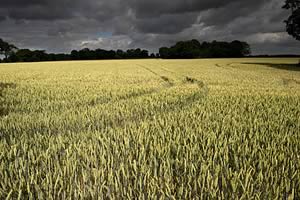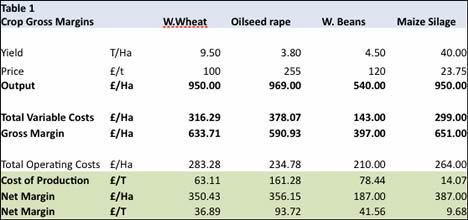 |
|||||||||
|
|||||||||||||||||||
|
|
Electricity from Crops – What is it Worth? 2010-08-12 One of the most topical sources of renewable energy generation is anaerobic digestion (AD). Strongly backed by the new coalition government, AD is set to play an important role in helping reduce carbon emissions and increase sustainability.
On Farm AD facilities are typically fed with a combination of farm by products (animal slurries and manures) and energy crops, the most widely used of which is maize silage.
Under the Feed in Tariff (FiT) scheme announced in February 2010 each kWh of surplus electricity produced from an AD facility receives 11.5p/kWh (for plants up to 500kWh) or 9p/kWh (for plants above 500kWh). The electricity sold will receive a minimum of 3p/kWh. If electricity can be used on site to substitute for purchased electricity it will have a typical value of 8p/kWh. The total value of the electricity is therefore in the range of 12 p/kWh to 19.5 p/kWh as illustrated in Table 2. Prices will remain at this level until the FiT is reviewed in 2013. Any new project applying for FiTs between now and then, however, will be able to guarantee the current tariffs in Table 2 for 20 years with index linked increases.
|
||||||||||||||||||

|
|
||||||||||||||||||
| home | agri-services | pedigree
pen | news | dairy | beef | machinery property | organisations | site map |
|||||||||||||||||||


